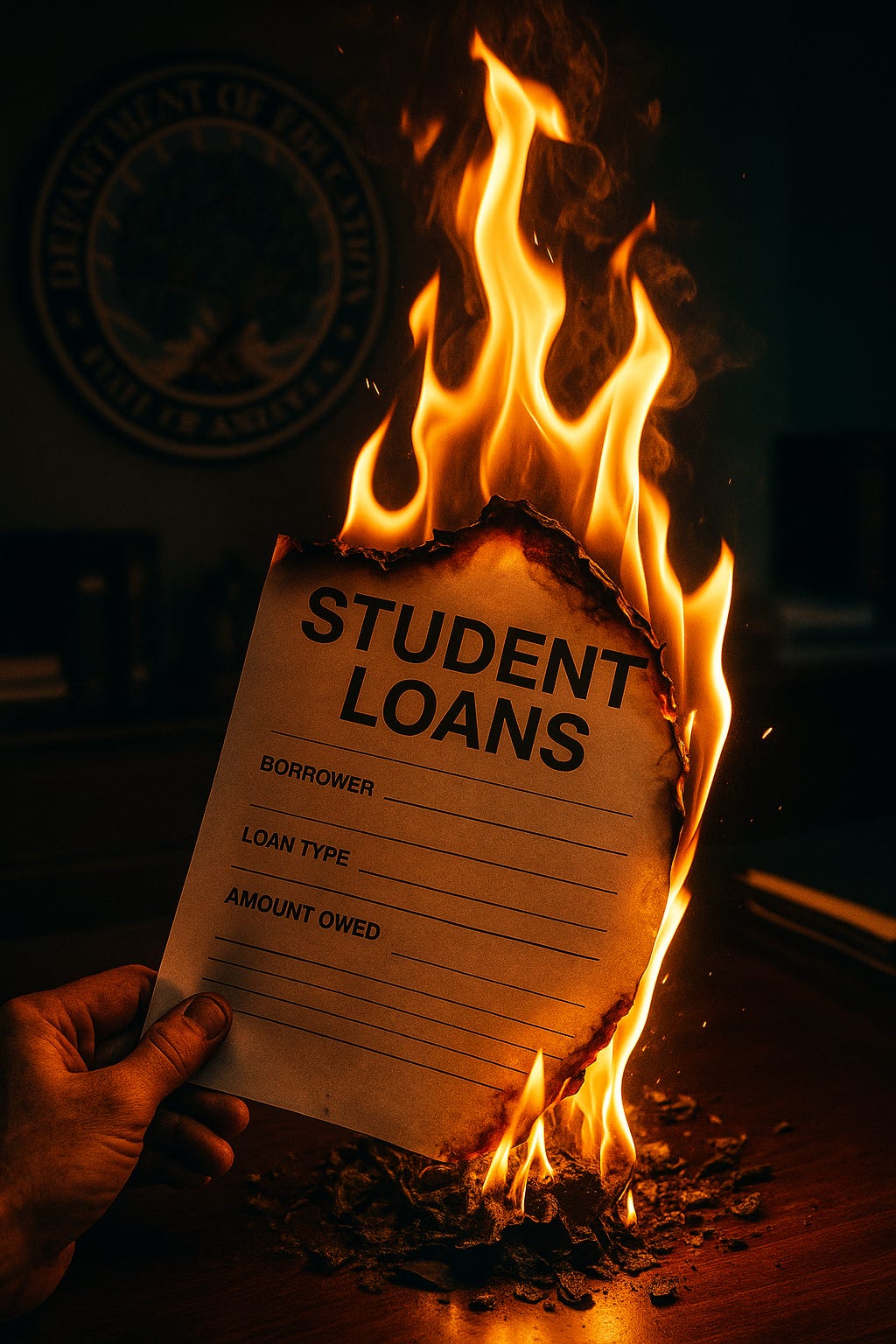Forgiveness Denied: How Trump’s DOE Purge Is Breaking the Student Loan System
The political purge is unraveling student loan forgiveness at the worst possible moment — leaving teachers, nurses, and public workers in crisis.
I’ve been a public school teacher for over 25 years. I’ve served low-income students, mentored new educators, and stayed in the classroom while others left — because PSLF gave me hope that my service mattered.
But when my forgiveness date came close in 2024, MOHELA placed my account in forbearance — after assuring me it wouldn’t affect my progress. They were wrong. Those months were stripped from my payment count. When I tried to correct it, I couldn’t even get through. Their phone lines were jammed, their portal was broken, and nobody responded for months.
So I did what public servants always do — I kept going. I made extra payments manually. I re-submitted my PSLF application. And I’ve now filed a reconsideration request to get back the credit I rightfully earned. But I’m scared. Not just for me — but for every teacher, nurse, and social worker who’s counting on this program while Donald Trump and Linda McMahon try to dismantle it in real time.
This Isn’t Just My Story. It’s a National Crisis.
The delays and roadblocks I’ve faced are now becoming the norm — not the exception. After the Supreme Court greenlit Trump’s mass firing of Education Department employees, the entire student loan system is buckling. Millions of borrowers are in limbo, trapped by bureaucratic dysfunction and political sabotage at the very moment they were promised relief.
Impact of Supreme Court Decision on Student Loan Forgiveness and DOE Services
The Supreme Court’s decision to allow the Trump administration to proceed with firing hundreds of Education Department workers has had a profound and immediate impact on the federal government’s ability to help student loan borrowers, especially those seeking forgiveness or needing urgent assistance
How Has This Decision Affected Student Loan Forgiveness?
Delays and Disruptions: The mass layoffs—nearly half the Department’s workforce—have created significant delays in processing student loan forgiveness applications, including Public Service Loan Forgiveness (PSLF) and Income-Driven Repayment (IDR) forgiveness. Borrowers are experiencing longer wait times, reduced communication, and growing backlogs.
Reduced Oversight and Support: Key offices like Federal Student Aid (FSA) and the FSA Ombudsman, which handle complaints and resolve disputes, have lost a substantial portion of their staff. This has led to fewer resources to help borrowers navigate complex forgiveness programs or address errors.
Suspended or Paused Services: Some loan servicers have reported that the Department of Education temporarily halted the ability to track forgiveness progress, leaving borrowers in the dark about their eligibility and status. The specialized teams that managed PSLF and IDR issues have been reassigned or eliminated, causing further confusion and service gaps.
Risk of Unaddressed Errors: With fewer staff to review and process applications or oversee loan servicers, mistakes and unresolved issues are more likely, making it harder for borrowers to get timely corrections or relief.
Evidence That DOE’s Ability to Help Borrowers Has Been Affected
Direct Testimony and Reporting: Multiple sources, including borrower advocacy groups and federal employees, have confirmed that the layoffs have made it “effectively impossible” for the Department to fulfill its statutory duties, including certifying schools for federal aid and maintaining oversight of student loan servicers.
Backlogs and Paused Forgiveness: There are currently backlogs of over a million IDR applications, and many borrowers report that their forgiveness progress is not being tracked or processed at all. Some eligible for forgiveness have not had their loans discharged, even when legally required.
Court Findings: Federal judges and appeals courts have acknowledged the “disabling impact” of the mass firings, stating that the cuts have prevented the DOE from effectively implementing programs and services required by law.
Borrower Experiences: Borrowers are being advised to meticulously document all interactions, monitor their accounts, and prepare for significant delays, as federal oversight and support are now severely limited.
How to Track and Document the Impact
Monitor Official Communications: Check StudentAid.gov and your loan servicer’s website regularly for updates on forgiveness processing and service changes.
File Complaints: Use state consumer protection offices and the FSA Ombudsman (if still operational) to report unresolved issues or delays.
Advocacy and Media Reports: Follow reputable news outlets and borrower advocacy organizations for ongoing analysis and updates on DOE functionality and borrower experiences.
Congressional and Court Proceedings: Watch for further legal developments, as ongoing litigation may force the reinstatement of some staff or functions.
What Borrowers Should Do Now
Be Proactive: Document every payment, application, and communication with your servicer.
Seek State-Level Help: If federal support is unavailable, contact your state attorney general or consumer protection office.
Stay Informed: Legislative and legal challenges are ongoing, and the situation may change as courts and Congress respond to these unprecedented cuts.
Join the Conversation:
Have you been affected by PSLF delays or student loan mismanagement? Are you seeing the impact of the Department of Education’s staffing cuts in your own experience? I’d love to hear your story. Share your thoughts, questions, or frustrations in the comments — this space is for us. The more we speak up, the harder it becomes to ignore.




